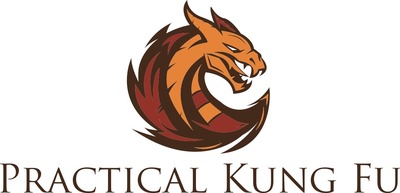The Horse Stance is our most basic Kung Fu stance, and it is employed throughout beginner training to build strength in the legs.
There are two more variations of the Horse Stance that are transitional type stances.
Transitional stances are seen throughout our form work, as we move from one technique to another, mimicking a fighting sequence.
The two variations of the Horse Stance are the Leaning Horse Stance and the Charging Horse Stance.
The Leaning Horse Stance is most often employed in training rounded type striking techniques.
We’ll typically start in a Horse Stance. As we throw a strike such as a Palm Slap, we will shift into the Leaning Horse Stance.
For example, if I start in Horse Stance and I want to throw a Palm Slap with my right hand, I will shift my weight to the left and turn the hips to the left as well, until my right shoulder is now forward.
This movement allows me to add much more power to the strike as I turn the hips and move my weight behind the strike.
This is the Right Leaning Horse Stance. Be sure to remember that even though you are shifting weight onto the left foot, because the right shoulder is forward, it is referred to as the Right Leaning Horse Stance.
The Left Leaning Horse Stance then ends with the weight on the right foot and the left shoulder forward.
The Charging Horse Stance is an excellent strength training stance, as it is held in a deeper position than the normal Horse Stance.
The Charging Horse Stance is a transitional stance employed when you are moving forward and backward.
To get the most out training this stance, you will want to be sure that you hold it deep enough so that the shin of your back leg is parallel to the floor.
Stance work can be an excellent way to enhance a normal strength training program as can be found in my Warrior Fitness Training Program.
Check out the video below to learn more about the Leaning Horse and Charging Horse stances.
Discover more from Practical Kung Fu
Subscribe to get the latest posts sent to your email.

Leave a Reply